
Gardening is like a science, and you need to know which plants will work best in full sun, partial sun/shade, and full shade. If you are looking for plants in your garden that will last longer than two years, your best bet is to go with perennials.
Perennials can turn a dull garden into an oasis for butterflies and bees, typically flowering during spring, summer, or fall, with a select few blooming in winter.
Most perennials start growing in spring through summer, dying back into the ground in fall. Some are evergreen, but these are only a select few.
When dealing with a garden that receives direct sunlight, you need to know which perennials are best suited to this environment. So what are the ten best perennials for a full sun garden?
1. Blanket Flower (Gaillardia)
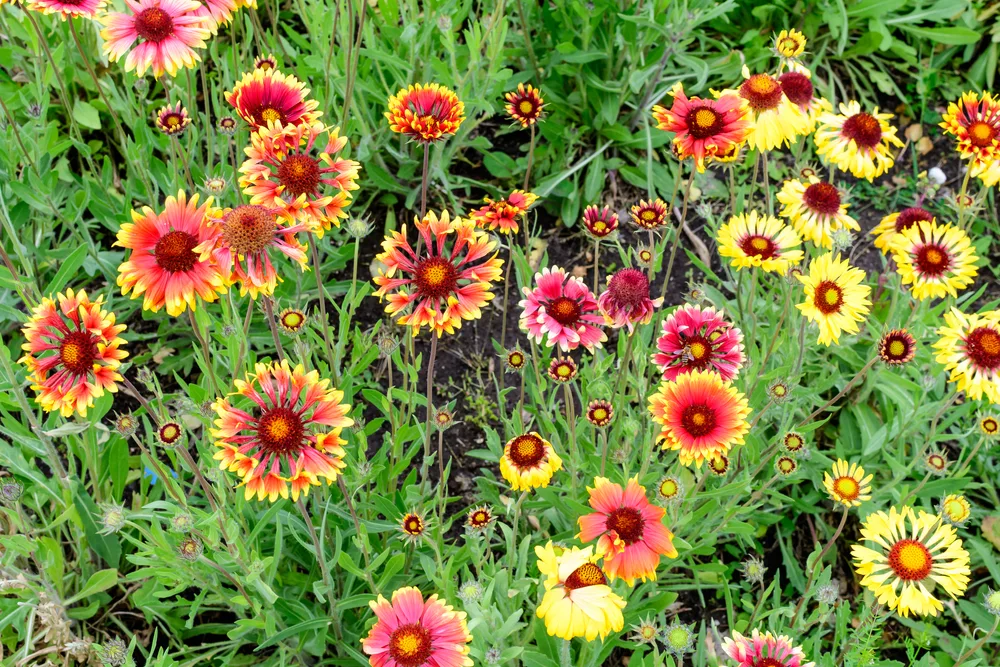
The Blanket flower is drought resistant, tough, sun-loving perennial and a native of the American prairies. It grows 18 – 22 inches tall and produces waves of double or single daisy-like flowers, with the flowers held high on sturdy stems above the plants’ foliage.
Hardy to zones 3 – 11, the Blanket flower is an easy grower needing only a sunny spot and an intermittent drink of water. They are easy when it comes to the soil they are planted in but prefer to live in a well-drained area that doesn’t stay muddy after rainfall.
If they are grown in the more northern parts, a light mulch will benefit them in winter, helping them handle below zero temperatures.
Dividing them every few years promotes more vigorous growth. They can sometimes be short-lived perennials, so adding a few plants every few years will be beneficial.
2. Purple Coneflower (Echinacea)
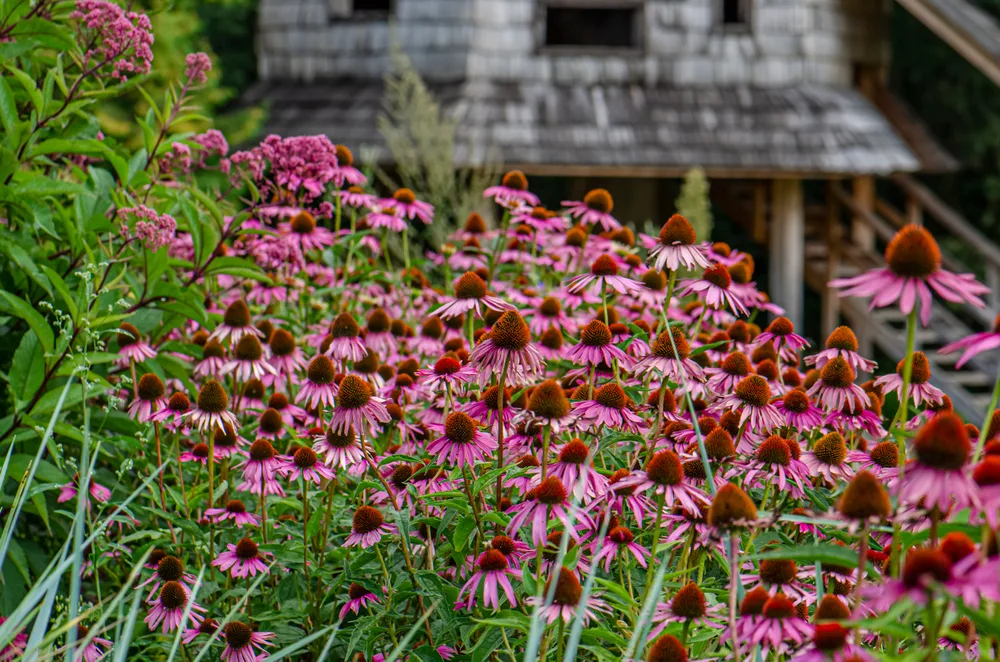
This beautiful perennial is an extremely tough plant and is considered one of the best flowering plants for a sunny spot.
The most common coneflowers produce big single-petalled flowers, but you can get double or triple flowering types. They grow 18 – 36 inches tall and are hardy to zones 3 – 9.
Coneflowers need direct sunlight for at least 6 – 8 hours a day. If you don’t want the development of extra flower stalks, you should remove the faded flower heads off of the plant.
Coneflowers will also survive and look good in containers. They are not fussy when it comes to soil type but do prefer well-drained soil.
3. Black-Eyed Susan (Rudbeckia)
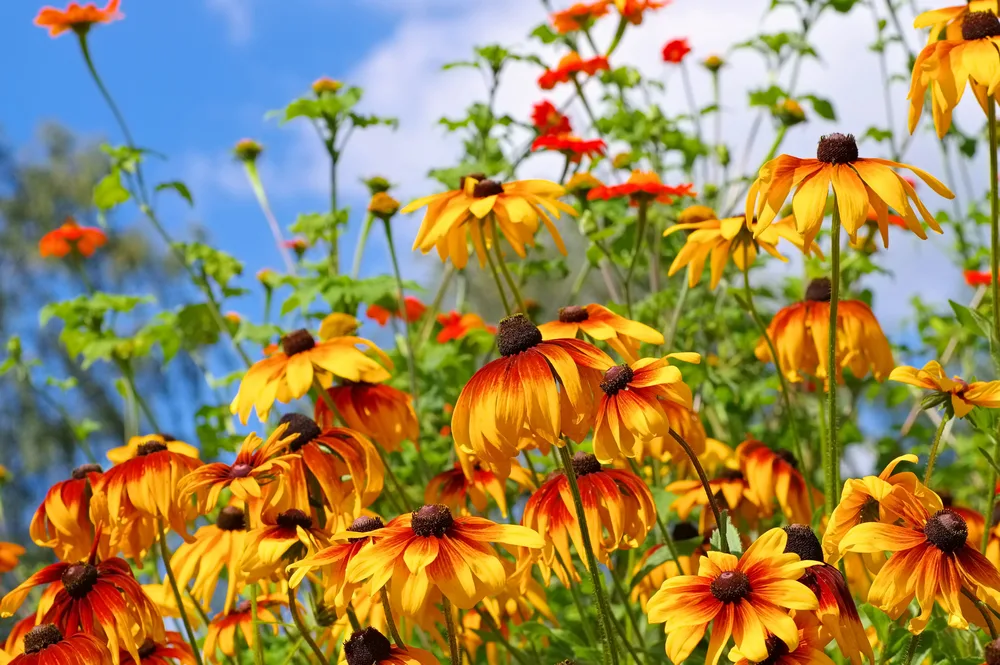
This beautiful perennial is a wildflower native to North America and is heat and drought-resistant, with daisy-like flowers.
Flower colors include gold, yellow, and bronze, with dark brown centers. Hardy to zones 3 – 11 and growing up to 24 inches tall, these perennials prefer moist, well-drained soil.
They grow well at your borders, in landscaped beds, and do well in container gardens.
Removing the faded flower heads appears to promote new waves of blooming flowers throughout the season.
The flowers are known for attracting bees, butterflies, and pollinating insects. Birds are also known to be attracted to the seeds if they are left.
4. Daylily (Hemerocallis)
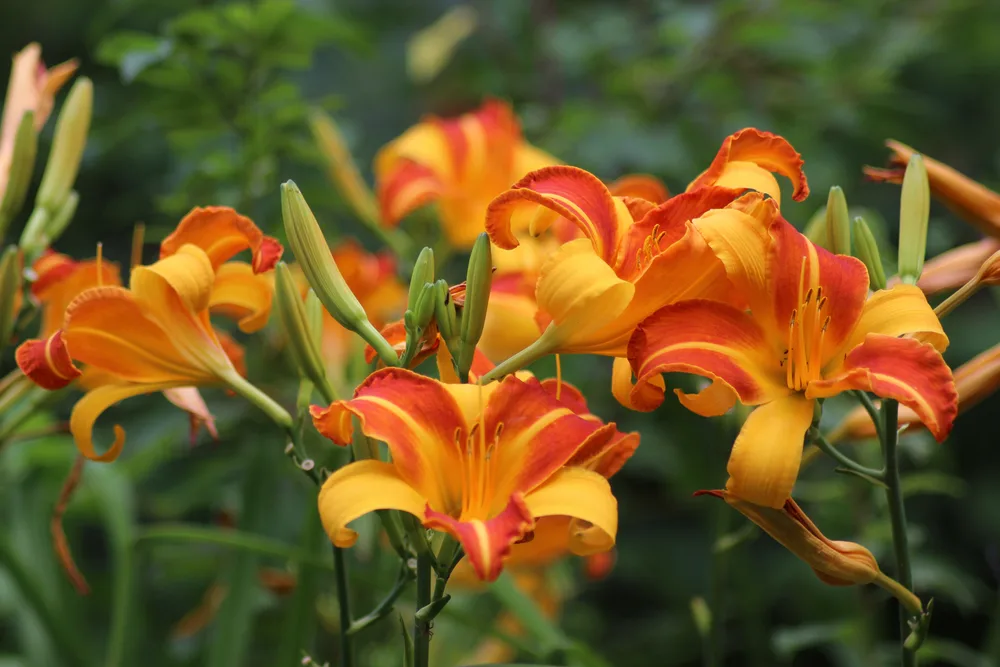
The daylily is often considered one of the most popular perennial flowers on the planet.
Growing 18 – 30 inches tall, it can grow almost anywhere and is so super tough you could probably drive a car over them without hurting them too much.
Daylilies got their name due to their flowers only lasting one day. But don’t let this deter you, as each plant will produce so many buds/blooms you won’t even notice.
Hardy to zones 3 – 9, a daylily is simple to care for and only needs plenty of sunlight and occasional water. They would be grateful for a bit of slow-releasing granular fertilizer, given in spring when the new growth begins.
Some Daylilies flowers and buds are edible and can be added to stir-fries or salads, but most forms are not recommended for animal or human consumption.
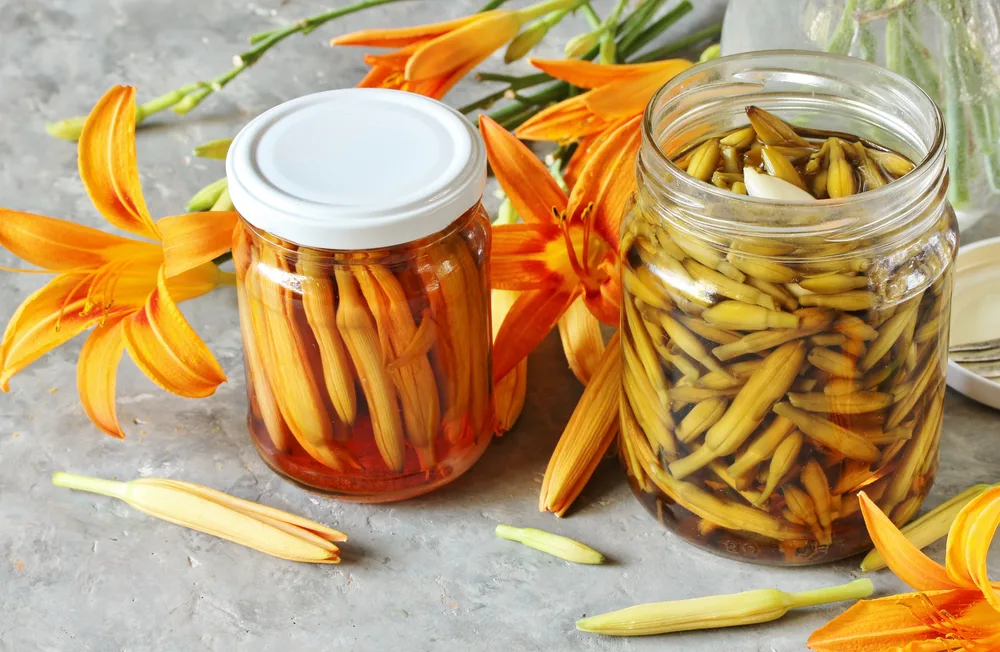
5. Bearded Iris (Iris spp.)
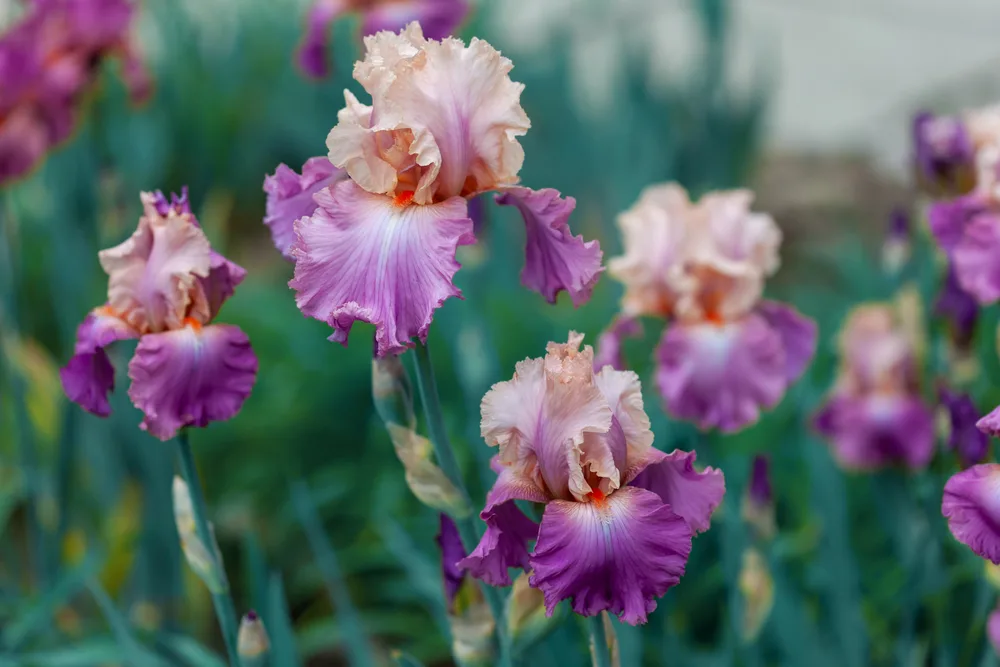
Bearded irises are easy to grow perennials, and each year, they slowly get bigger and better.
Hardy to zones 3 – 9 and growing 18 – 36 inches tall, the bearded iris prefers direct sunlight of at least 6 – 8 hours.
Its broad, strap-like foliage are significant assets, looking good even when not in flower, but its crown-like flowers, which top tall, elegant stems, are the prize of any garden.
Make sure that their soil is well-drained and not constantly wet, as this can cause root rot. The center of the plants will start to die out if the plant is not divided every few years; this is due to overcrowding of roots.
Adding a little bit of slow-release fertilizer in early spring will add to the plant’s overall health.
6. Peony (Paeonia spp.)
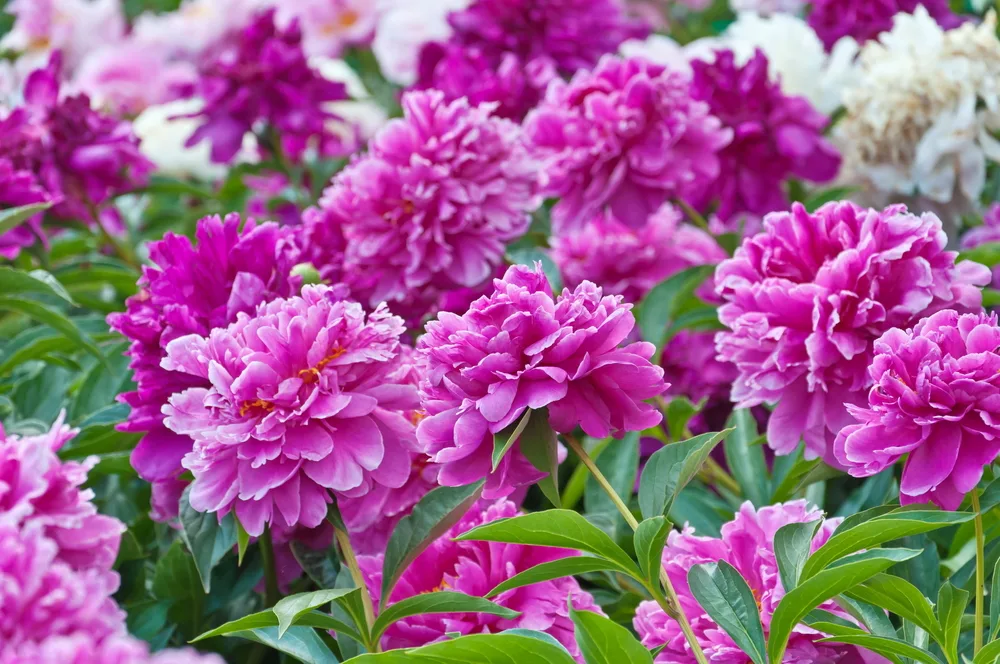
Peonies produce colorful and super fragrant blooms in singular and double flowering forms. Hardy to zones 3 – 8 and growing 24 – 36 inches tall, these perennials are shrubby forming mounds of attractive foliage, topped with large flowers. Peonies like to be planted in well-drained soil.
When planting your peonies, it would be best to make sure that you plant them in the soil at the same depth they were growing in their pots. Also, you need to ensure that the “eyes,” the area where new growth comes out, are not planted deeper than 2 inches below the soil’s surface.
Making a peony ring around your plants at the start of the season will prevent them from falling over during heavy storms.
Related Reading: How To Grow Peonies In Containers
7. Lily, Asiatic (Lilium)
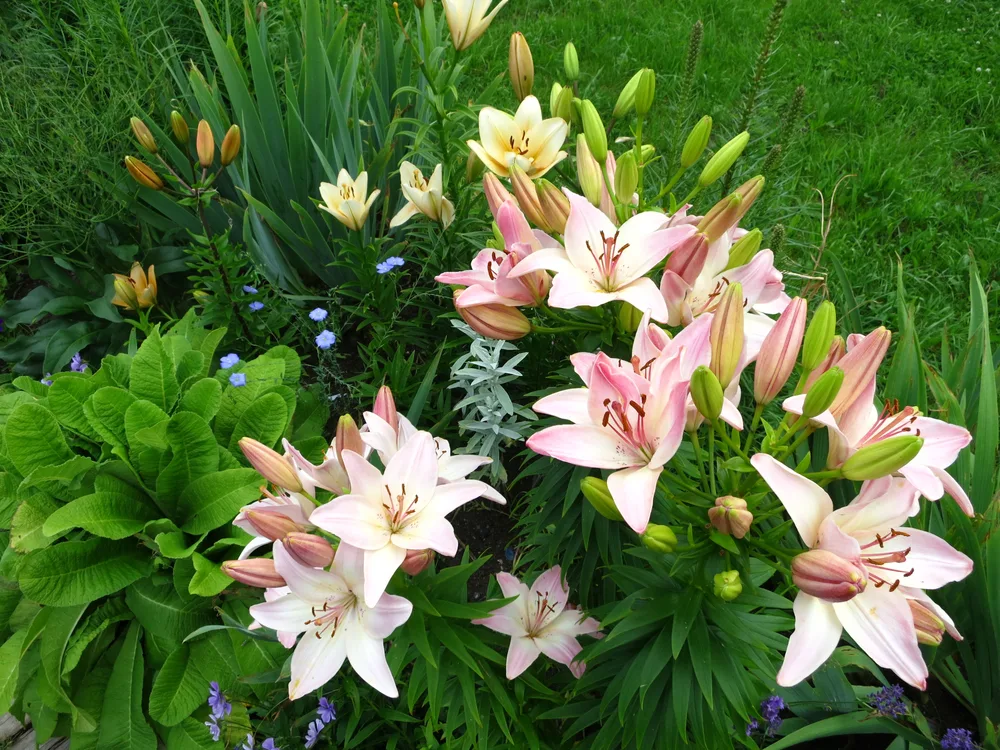
This beautiful summer bloomer is exceptionally easy to care for, with the flowers growing in clusters at the top of the plant.
Asiatic lily is a bulb that gets bigger each year, producing better flowering plants as it grows. Hardy to zones 4 – 8 and growing 18 – 24 inches tall with yellow, pink, orange, red, purple, white, and bi-color flowers.
Asiatic lily needs at least 6 – 8 hours of direct sunlight daily, with well-drained soil to prevent root rot. Divide the plants every 3 or 4 years during fall.
After flowering, Asiatic lily will begin to go dormant, sprouting back in early spring. The flowers are fragrant, will attract hummingbirds, and are rabbit and deer resistant.
8. Tickseed (Coreopsis spp.)
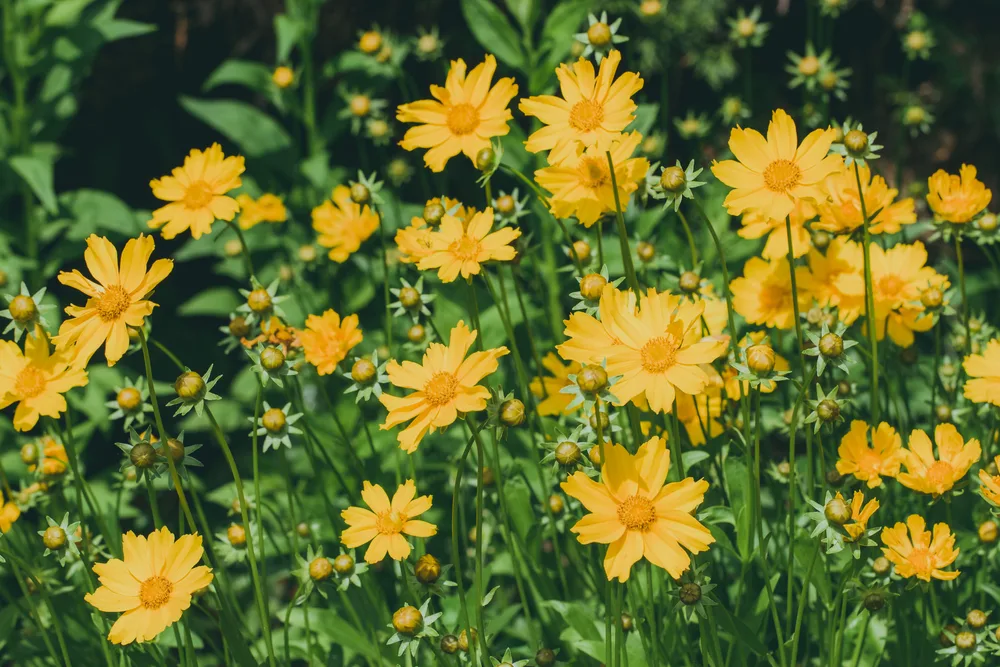
Coreopsis is Native to North America and is a drought-resistant, sun-loving perennial that produces many flowers. This plant needs direct sunlight for at least 6 – 8 hours a day.
You only need to water this perennial when the soil feels dry to your touch. It prefers well-drained, rich soil; but will survive in drier, poorer conditions.
Coreopsis is hardy to zones 4 – 9 and grows 18 – 24 inches tall; they come in a dwarf form that grows 6 – 12 inches tall. Coreopsis makes a beautiful groundcover. It’s best to plant these perennials in the spring once any risk of frost is over.
Blooming will begin during the second year after you have planted them. If you wish to promote additional flowering, you can clip away the faded flowers.
9. Salvia (Salvia spp.)
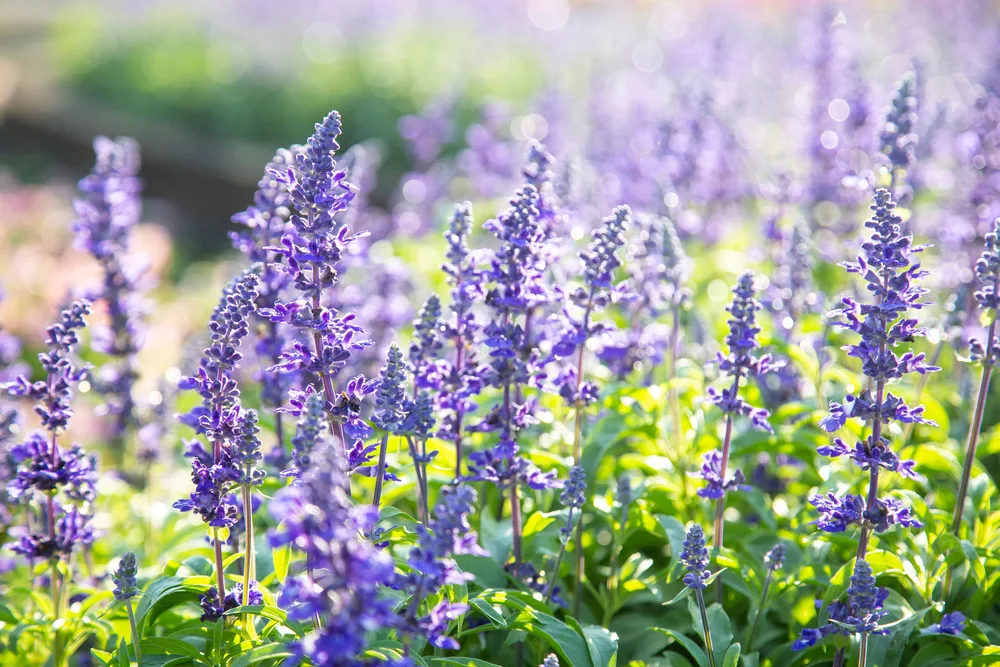
Perennial salvia, which looks remarkably like lavender, is relatively drought-resistant, and they love hot weather. There are many different types of salvia, and each of them flourishes in its zone, which ranges from 5 – 10.
Plant your perennial salvia in an area that will receive direct sunlight for at least 6 – 8 hours a day. Height will vary depending on variety, but typically salvia stands 18 – 36 inches tall.
They prefer a well-drained, rich soil type. Make sure not to overwater salvias or place them into a damp or waterlogged area. Some forms of salvia will benefit from having their flowers removed after they have faded. Most varieties will put out tall spikes of blooms that are nectar-rich, attracting hummingbirds and butterflies into your garden.
10. Lavender (Lavandula angustifolia)
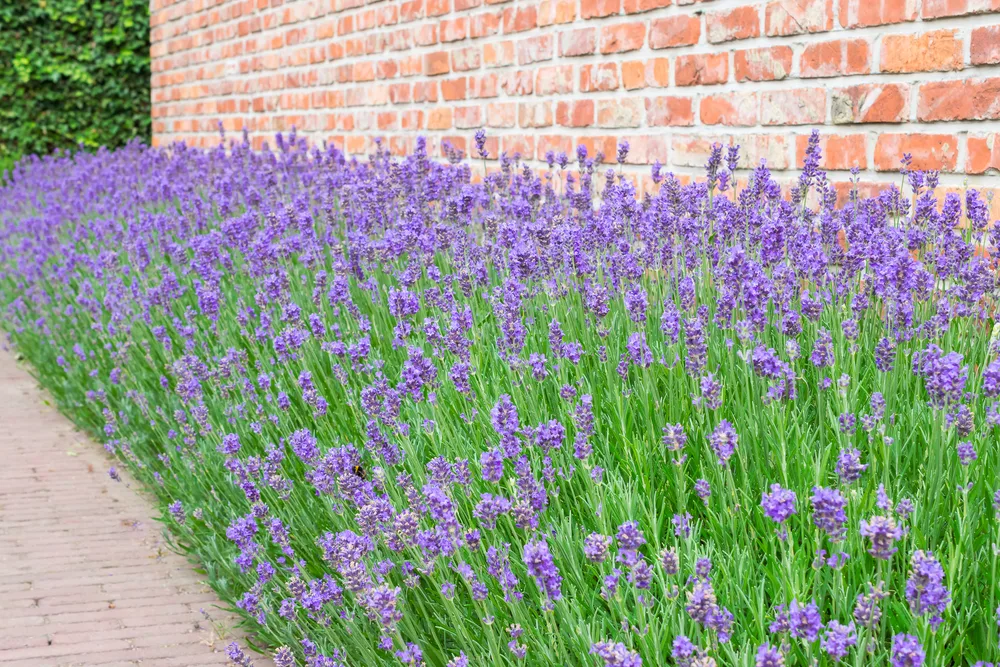
Lavender is a wonderfully scented, bushy perennial. Its green to grey foliage will stay evergreen all year in warmer regions. It will survive the harshest garden conditions and is hardy to zones 5 – 8, growing 12 – 36 inches tall.
Plant your young lavenders in the spring once the soil is a bit warmer, but if you plant close to fall, use more established larger plants.
In warmer climates, you can prune your lavenders in the fall. In cooler climates, it’s best to prune plants in the spring when the new green foliage starts to show. Removal of the top foliage of the plant by approximately one-third will prevent the plant from becoming bare and leggy at the base.
This plant will attract bees and butterflies into your garden.
Related Reading: How To Plant A Lavender Hedge (& 12 Reasons Why You Should)
Creating a beautiful perennial garden that receives full sunlight needs some research before the planting begins.
Ensuring you have the right plant for the position in your garden is vital so that you don’t plant something which will struggle in its chosen location. The above list of the ten best perennials for full sun should help you on your way!
